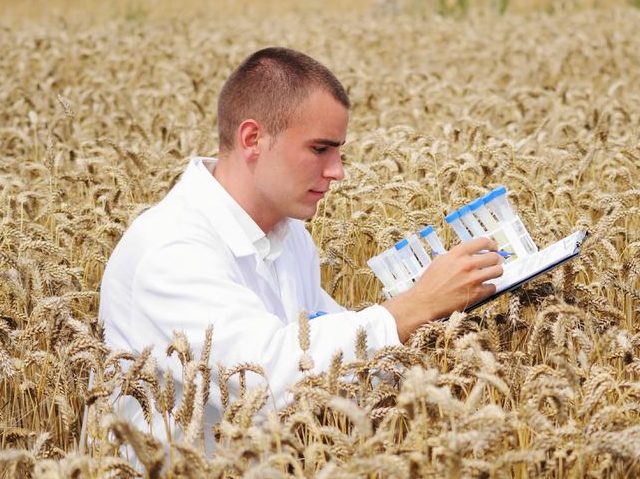Innovation is crucial for a modern farming business, yet given farming incomes are under pressure. This means that trying out new farming methods or financing farm level R&D is often problematic. However, many farmers don’t realise that simply trying out something new on your farm can make you eligible to claim R&D tax credits potentially worth tens of thousands of pounds.
The government-funded R&D tax credit incentive is intended to support large, medium, and small agricultural businesses with timely, risky, and costly R&D work. Research and Development (R&D) tax reliefs support UK companies working on innovative projects in science and technology. It makes no difference whether or not the projects involved were successful. You can also choose to claim a payable credit if your company is making a loss. In addition, if you’ve not claimed tax relief before on R&D projects, you may be able to apply for advance assurance.
It’s important to note that a business can claim only if it is liable for corporation tax, so the business must be set up as a limited company. Companies to deduct an extra 130% of their qualifying costs from their annual profit. This is on top of the normal 100% deduction, to make a total 230% deduction. There are two different schemes depending on the size of the company.
Small Companies
The small and medium-sized enterprise (SME) scheme covers companies with fewer than 500 staff. Qualifying businesses can claim up to one-third of their expenditure, which qualifies as R&D spend in tax credits. To help smaller companies SME R&D tax relief allows small companies to deduct an extra 86% of their qualifying costs, in addition to the normal 100% deduction from their yearly profit.
Larger Companies
- R&D expenditure credit (RDEC);
- If you’re a large company, you can claim expenditure credit on your qualifying expenditure costs;
- You can also claim for the RDEC if you’re a SME and you cannot claim SME R&D tax relief.
The RDEC scheme allows these larger businesses to claim up to 33% of the costs of their R&D project. This includes any project that’s designed to either make an advance in science or agricultural technology, improve an existing farming process, product, or service, or develop a new area within agriculture. And the R&D work doesn’t even need to be successful to be eligible for this tax relief.
So what can be achieved with R&D Tax Credits?
R&D tax credits have helped agricultural businesses create new, innovative animal vaccines, environmentally friendly fertilizers, improved methods of processing and better management techniques for fisheries. Other farmers have made successful claims in areas such as experimentation with feed to maximize animal weight gain or productivity. R&D tax credits have also been instrumental in the development of disease-resistant crops, higher-yielding crop strains, and new methods of crop planting. There is also potential for farmers to claim when they are collaborating with tech start-ups, for example, in testing for the rollout of new technology such as drones, sensors, or smart software. Typical examples of farm-level R&D could include:
Arable
- Trialing new varieties to improve yield, quality or disease resistance;
- Initiatives to improve soil quality or soil conservation for example new cultivation methods or regenerative agriculture;
- Innovative use of technology such as drones, sensors, scanners and smart software.
Livestock
- Disease prevention reducing antibiotic usage;
- Feeding trials e.g. novel feed ingredients, the timing of feed, ration timing.
- Investigating alternative ways to reduce the risk/rate of disease;
- Selective breeding to improve genetic traits;
All Farms
- Initiatives to improve sustainability;
- Crop rotation to maintain soil health
- Implementation of organic farming practices
- Use of renewable energy sources like wind or solar
- Adoption of precision agriculture technologies
- Initiatives to reduce environmental impact of food production;
- Reduction in the use of chemical fertilizers and pesticides
- Conservation of water through efficient irrigation systems
- Protection of natural habitats and biodiversity
- Support for local food systems to reduce transportation emissions
- Increased energy efficiency or recycling;
- Nature friendly farming and improved resilience to climate change.
The truth is that common activities which progressive farmers undertake every day could qualify for these tax credits.
Why Do So Few Farmers Claim R&D Tax Credits?
The R&D tax credits been around since 2000, but only 1,360 UK farming businesses claimed R&D tax credits in 2021/22. Despite this, the average agricultural claim was around £62,500. Sadly, many either don’t know that R&D tax credits exist or if they do, they associate them with scientists working in laboratories. The complexity of making a claim is also a deterrent for many farming businesses.
To this end, Farmlytics has partnered with Asquith Bradley to help agriculture businesses take advantage of UK R&D Tax Relief. Tax regulations and guidelines can be complex and change frequently, making it challenging for companies to navigate while ensuring compliance. Asquith Bradley specialises in agriculture, and its consultants have successfully claimed for some of the UK’s largest and most innovative agribusinesses. A specialist in tax and agriculture can present the claim comprehensively and compliantly, ensuring a successful claim outcome. Working with a specialist saves months of time and effort, optimises tax benefits, and minimises compliance risks.
If you want to know more or discuss how R&D tax credits can help drive innovation within your farming business don’t hesitate to contact us.

